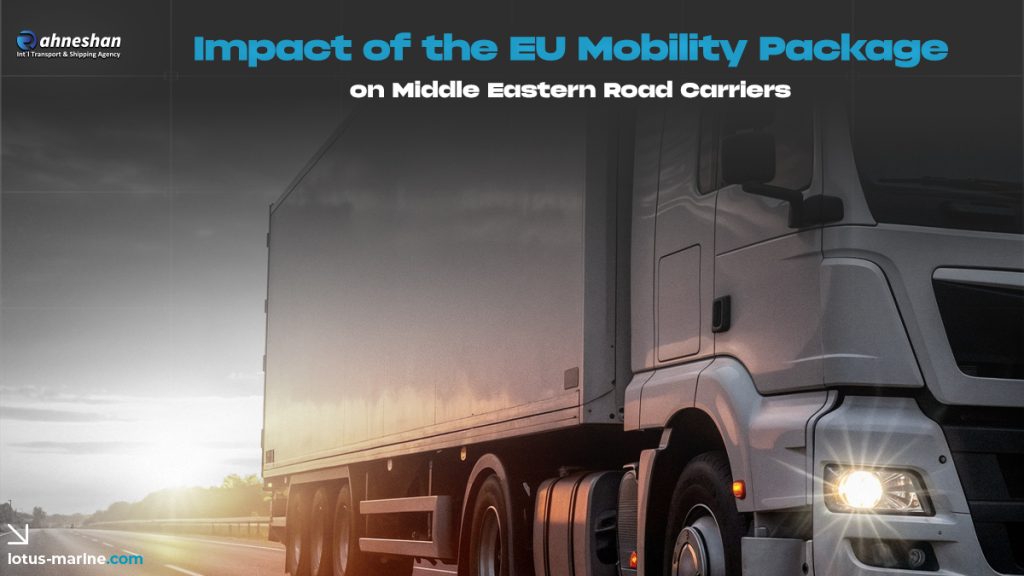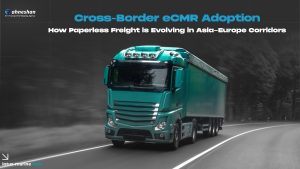Introduction
The EU Mobility Package, a comprehensive regulatory reform introduced by the European Union, has redefined how international road transport operates across its borders. While the legislation primarily targets European carriers, its ripple effects extend far beyond — especially to Middle Eastern road freight companies engaged in cross-continental logistics.
From compliance costs to operational restructuring, Middle Eastern carriers connecting the Gulf, Turkey, and Europe are now adapting to a stricter and more transparent logistics framework.
What Is the EU Mobility Package?
Implemented between 2020 and 2025, the EU Mobility Package consists of several transport policy measures that aim to:
-
Ensure fair competition among European and non-EU hauliers.
-
Improve driver working conditions.
-
Enhance road safety and environmental compliance.
-
Increase supply chain transparency through digital monitoring.
Key reforms include:
-
Mandatory return-to-home rules for trucks and drivers.
-
Cabotage limits to restrict domestic operations by foreign carriers.
-
Tachograph and GPS tracking for real-time monitoring.
-
Updated rules on rest periods, posting of drivers, and vehicle leasing.
How the Package Affects Middle Eastern Carriers
1. Route Planning and Fleet Utilization
Carriers from Turkey, the UAE, Saudi Arabia, and Jordan that operate into or via the EU now face tighter scheduling restrictions. Trucks must return to the country of registration every eight weeks, complicating long-haul operations and reducing utilization rates.
2. Higher Compliance Costs
Non-EU carriers serving European clients must upgrade fleets with smart tachographs (version 2), register in EU digital platforms, and ensure drivers hold proper rest documentation — all of which increase operational expenses.
3. Labor and Driver Management
Stricter rest-time regulations and “posting of driver” rules make crew rotation and accommodation logistics more complex. Companies with multinational fleets must now align contracts with EU social and labor standards to avoid fines.
4. Border Delays and Documentation
Increased roadside inspections and new data-sharing requirements can cause delays at EU borders. Middle Eastern carriers working through Turkey or Bulgaria often report additional customs waiting times due to document verification under the new system.
5. Shifting Competitive Landscape
The package aims to protect EU operators from low-cost competition. This forces non-EU carriers to differentiate through service reliability, technology integration, or niche lanes (e.g., temperature-controlled and high-value cargo).
Strategic Responses from Middle Eastern Companies
1. Partnership with EU-Registered Subsidiaries
Many carriers are setting up EU-based subsidiaries or joint ventures to retain access to intra-European routes while staying compliant with cabotage limits.
2. Fleet Modernization
Investment in EU-compliant trucks, smart tachographs, and eco-friendly engines (Euro VI or LNG) ensures both environmental and regulatory alignment.
3. Digital Integration
Adopting real-time tracking, eCMR documentation, and predictive route planning tools improves transparency and helps meet digital reporting standards.
4. Workforce Optimization
Rotational scheduling and driver hubs near border logistics zones (e.g., Istanbul, Thessaloniki) help carriers meet rest requirements without halting operations entirely.
5. Diversification of Routes
Alternative corridors—through the Caucasus, Balkans, or Mediterranean multimodal routes—are gaining attention to reduce dependency on congested EU entry points.
Opportunities Hidden in the Challenge
While compliance adds complexity, the EU Mobility Package is also pushing Middle Eastern carriers toward professionalization and modernization.
-
Adopting EU standards improves brand credibility and opens doors to higher-value contracts.
-
Fleet digitalization enhances efficiency and carbon reporting, aligning with global ESG expectations.
-
Strategic partnerships across borders are fostering a more integrated Euro-Middle Eastern logistics corridor.
Challenges Ahead
-
Regulatory Complexity: Continuous updates require legal and administrative expertise.
-
Cost Pressure: Compliance investments can strain smaller carriers.
-
Talent Shortages: Aligning with EU labor standards increases driver turnover costs.
-
Competitive Displacement: EU-based hauliers may dominate routes previously led by Middle Eastern operators.
Future Outlook
By 2030, Middle Eastern carriers that successfully digitalize, green their fleets, and partner with EU counterparts will hold a strategic advantage in Euro-Asia trade.
The line between “European” and “Middle Eastern” logistics operators will blur as regulatory harmonization and digital transparency become global norms.
Conclusion
The EU Mobility Package is reshaping the dynamics of international road freight, compelling Middle Eastern carriers to evolve rapidly. Compliance may be costly, but it also represents an opportunity to build a smarter, greener, and more competitive logistics industry that meets global standards.
In the long term, adaptation to these reforms will define who thrives in the connected Euro-Middle Eastern freight network.
Frequently Asked Questions (FAQs)
1. What is the EU Mobility Package?
A set of EU transport regulations introduced between 2020–2025 to ensure fair competition, improve driver welfare, and reduce emissions.
2. How does it affect non-EU carriers?
It adds stricter compliance, digital tracking, and labor rules for all operators entering the EU.
3. Which Middle Eastern countries are most impacted?
Turkey, Jordan, Saudi Arabia, and the UAE—key players in Europe–Asia road logistics.
4. What should carriers do to stay compliant?
Upgrade fleets, adopt digital tracking, establish EU partnerships, and train drivers on new rest-time and reporting rules.
5. Is the regulation beneficial in the long run?
Yes. It drives modernization, transparency, and sustainability across the logistics sector.







